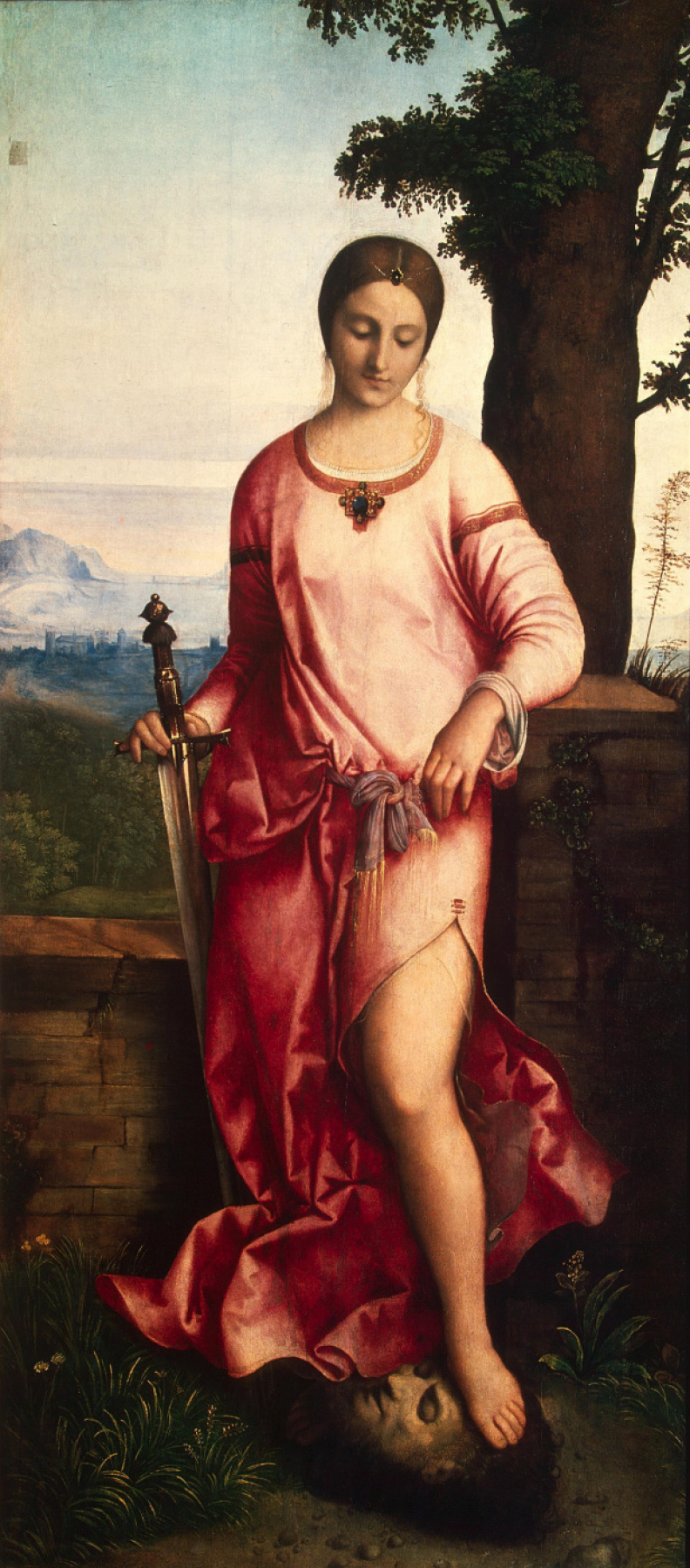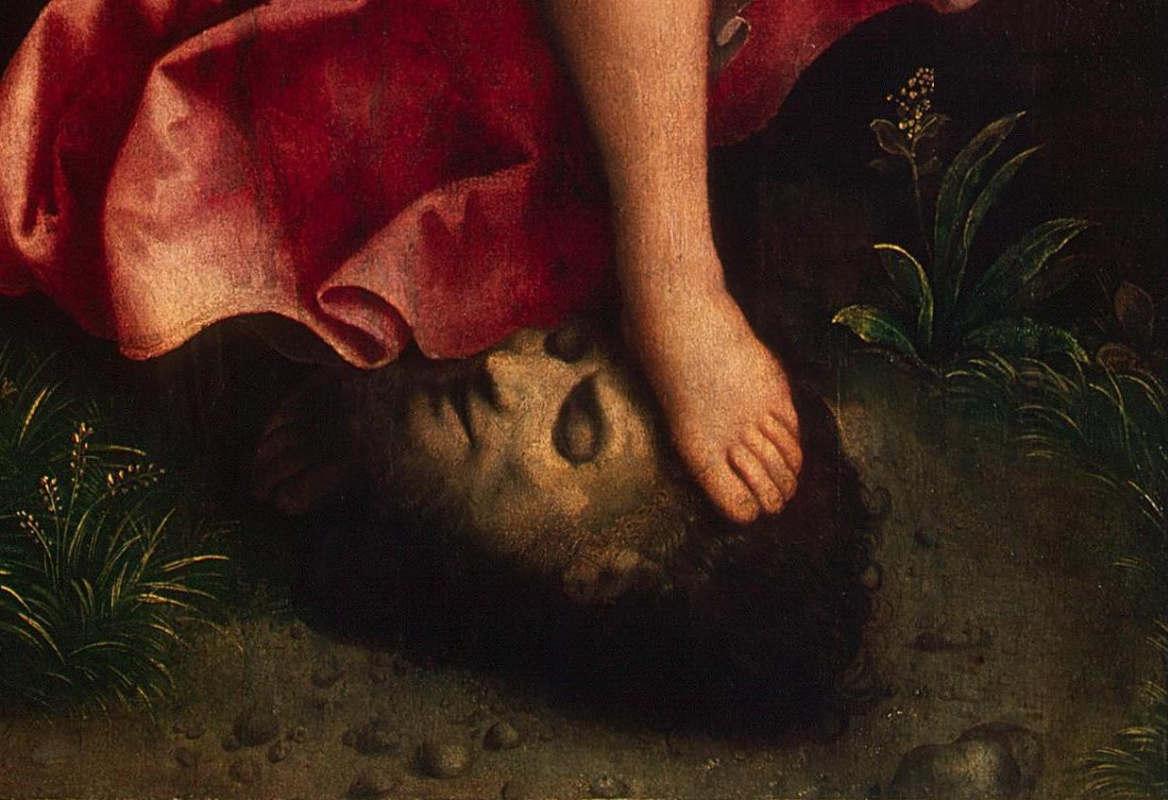log in
Enter site
Login to use Arthive functionality to the maximum
Judith
Giorgione • Peinture, 1504, 144×68 cm
Descriptif de la toile «Judith»
Giorgione is truly the most mysterious and modest painter of the High Renaissance. There are many versions of its origin, but there is not a single documentary evidence of any of them. Many art critics say that he was a student of the greatest artist Giovanni Bellini, but this assumption has no direct evidence. The only undoubted fact is that Giorgione's talent was innovative, outstanding and bright. In addition to his remarkable works, he is famous for having managed in his short life to help reveal the talent of the legendary Titian - the latter was his student. For some reason, Giorgione did not sign his canvases and did not name them. The atmosphere of light understatement is generally inherent in the paintings, which are attributed to its authorship.
Painting by Giorgione "Judith" written presumably in 1504–1506. On the canvas, we see a charming young woman, who with one hand at ease holds a formidable sword, with the other holds her chiton. The woman smiles faintly, she is lost in thought. Judifes slender leg rests on the head, which she has cut off, according to one of the biblical legends. According to legend, the pious widow is rubbed into the confidence of the commander of Nebuchadnezzar Olofren, who with a huge army took in the siege of her hometown. At the first opportunity, the widow beheads the leader of the enemies, thereby saving her people.
Giorgione's painting “Judith” is a canvas that cannot leave anyone indifferent. The pacified woman and the nature that opens behind her, in sharp contrast with the severed head of Olofren. The artist clearly shows how Judith assesses his action. Calm and sense of accomplishment reflected on the face of the heroine. Gentle and charming Judith stood up for her city, and killing the enemy did not change her. She remained just as pious - this is how Giorgione presents it to us.
Giorgione's contemporaries argued that it was this master who was the first to introduce romantic lyricism into the strict Venetian style of the time. The heroes of his canvases demonstrate emotions, their moods and experiences are immediately captured by connoisseurs. The painter boldly gave a new interpretation to this or that event, which served as a plot for his picture. In Giorgione's painting “Judith,” the legend found both a fresh reading and execution.
Brushes Georzhona credited with ten to fifteen paintings. But even such a small legacy led to a huge number of followers and imitators. The original painting by Giorgione “Judith” can be seen in the Russian State Hermitage Museum. The last time a unique painting was restored in 1967.
Painting by Giorgione "Judith" written presumably in 1504–1506. On the canvas, we see a charming young woman, who with one hand at ease holds a formidable sword, with the other holds her chiton. The woman smiles faintly, she is lost in thought. Judifes slender leg rests on the head, which she has cut off, according to one of the biblical legends. According to legend, the pious widow is rubbed into the confidence of the commander of Nebuchadnezzar Olofren, who with a huge army took in the siege of her hometown. At the first opportunity, the widow beheads the leader of the enemies, thereby saving her people.
Giorgione's painting “Judith” is a canvas that cannot leave anyone indifferent. The pacified woman and the nature that opens behind her, in sharp contrast with the severed head of Olofren. The artist clearly shows how Judith assesses his action. Calm and sense of accomplishment reflected on the face of the heroine. Gentle and charming Judith stood up for her city, and killing the enemy did not change her. She remained just as pious - this is how Giorgione presents it to us.
Giorgione's contemporaries argued that it was this master who was the first to introduce romantic lyricism into the strict Venetian style of the time. The heroes of his canvases demonstrate emotions, their moods and experiences are immediately captured by connoisseurs. The painter boldly gave a new interpretation to this or that event, which served as a plot for his picture. In Giorgione's painting “Judith,” the legend found both a fresh reading and execution.
Brushes Georzhona credited with ten to fifteen paintings. But even such a small legacy led to a huge number of followers and imitators. The original painting by Giorgione “Judith” can be seen in the Russian State Hermitage Museum. The last time a unique painting was restored in 1967.





